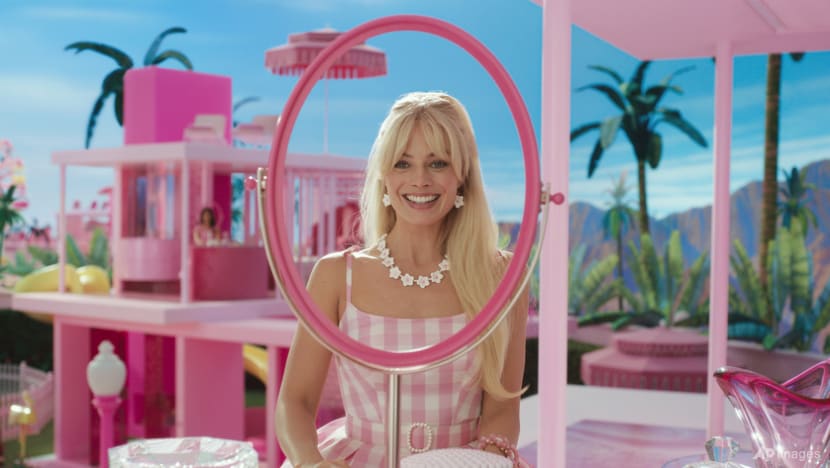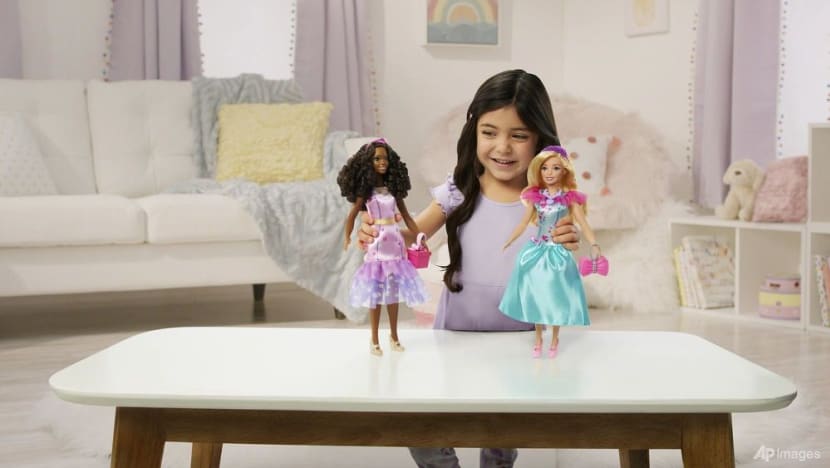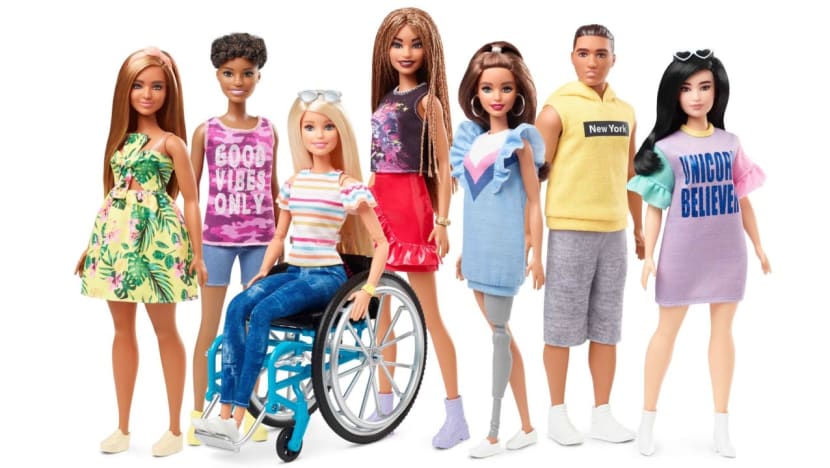Commentary: I looked nothing like my Barbie doll growing up, but she was still an inspiration
The ageless, anatomically unachievable toy doll has often been criticised for projecting a stereotypical image of femininity. With an upcoming movie by Oscar-nominated director Greta Gerwig, a cultural reset might just be in order, says writer Karen Tee.

SINGAPORE: It is looking to be a fluorescent pink summer, thanks to the much-hyped Barbie movie to be released on Thursday (Jul 20).
There has been plenty of anticipation as to how this 64-year-old toy will be portrayed in the film, by actress Margot Robbie and Oscar-nominated director Greta Gerwig. After all, this iconic Mattel doll is no stranger to criticism.
Detractors say that Barbie’s hourglass body proportions led to generations of women growing up with unrealistic expectations of how they should look, causing self-esteem and body image issues. Her frou-frou candy-coloured wardrobe has also been criticised for promoting a narrow concept of femininity focused on physical appearance.
A movie about Barbie’s life in plastic might sound out of place in 2023. Would it reinforce long-held stereotypes or in a feminist bid to cast this baggage aside, risk losing the essence of what made the dolls so beloved to children growing up?
But as this nostalgic millennial thinks back to my time playing with Barbie, the standout memories do not involve me staring wistfully at the mirror wondering why I looked nothing like my leggy, blonde-haired and blue-eyed doll.
BARBIE EMBODIED CHILDHOOD ASPIRATIONS
Instead, I remember how my sister and I dreamt up all sorts of scenarios for our collection of Barbies and Kens, from attending school to going to work in a nice office, even travelling around the world. Our imaginary worlds kept us entertained for hours - something that helped spark my lifelong love for crafting stories, which I continue to do professionally.
Despite being “just a doll”, what makes Barbie unique - and is perhaps the secret to its longevity despite plenty of toy trends coming and going - is that she provided young girls with an adult avatar to imagine what they could be when they grew up.

This was exactly what Ruth Handler had hoped to do when she created Barbie in 1959. She noticed that most dolls of that era were either babies or toddlers and, apparently upon observing her daughter’s fascination with paper dolls of career women, thought it would be commercially viable to create a version that would allow girls to dream of their future.
In line with this aspirational ethos, Mattel has consistently launched dolls embodying the personas of various occupations from surfers and scientists to CEOs and even the president of the United States. There have also been countless Barbies modelled after real life women from civil rights hero Rosa Parks to artist Frida Kahlo and tennis star Naomi Osaka.
To be honest, I barely remember what my dolls looked like. But some of my clearest memories are of a simple Barbie board game titled “We Girls Can Do Anything”, the point of which was to move our pieces around until we achieved our career of choice, such as an astronaut, musician, teacher or doctor. Even today, this tagline still pops into my head like a little pep talk when I encounter hurdles.
NOT ALL MARKETING AND CONSUMERISM
If the hype around the movie and the popularity of the #Barbiecore hashtag on social media is any indicator, there are certainly many others who share fond memories of the doll, even though it seems more fashionable to critique it.
Barbie’s appearance - originally modelled after a European adult toy and gag gift - has in particular drummed up plenty of scrutiny. The doll underwent a “make-under”, plumped up lips and heavy eye make-up removed in favour of the “all American” girl-next-door look we are now familiar with.
This blank canvas turned out to be a savvy marketing move, as it provided doll makers with the opportunity to sell anything from clothing and accessories to Dreamhouses and fancy cars for their proud owners to create dream worlds of their own. But attached to this is also the notion that Barbie is independent - these were her clothes, her house, her car.
There is no doubt that some of the superficial aspects of Barbie, like her extensive array of clothing, mattered to us as children.
Thankfully, with thrifty parents who recognised this as a marketing ploy and refused to splurge excessively, we had no choice but to be resourceful. This meant being creative with whatever we had or repurposing hand-me-down doll’s clothing.
Sometimes, we lucked out when our aunt or grandmother would sew some new pieces to add to our collection. How's that for using the doll as a tool to spark imagination instead of as an object of materialism?
CULTURAL RESET
In more recent years, the doll makers have attempted to keep up with the times by releasing a more diverse-looking range of dolls, from curvier versions to Barbies in wheelchairs or with prosthetic limbs as well as those of different ethnicities and nationalities. These too have resulted in some backlash, such as accusations that Mattel is “commodifying culture”.
Yet, some of these versions have been undeniably impactful on today’s children. Mattel said that Barbies who use wheelchairs were the second most popular dolls on its Fashionista range sold in 2020 and that the company will continue to create dolls that kids can see themselves reflected in.

For the next chapter, it appears that the company is set to take its biggest risk yet with Greta Gerwig’s movie. This time, they are banking on the director’s ability to create compelling characters that audiences - both adults and kids - can identify with.
In the movie, Barbie leaves perfect Barbieland to enter the real world, where she discovers what life is like in reality.
I have been trying my best to avoid spoilers to enjoy the movie in the cinema. But there is one reveal (inconsequential to the plot) that I take heart in.
In a Rolling Stone interview, Gerwig talked about a small exchange in the film where Barbie tells an older woman - ageing being a reality of life Barbie was previously unaware of - that she is beautiful.
As my generation conquers career challenges, builds our own families and inevitably, approaches our midlife years and faces up to the realities of ageing, it is certainly a worthwhile reminder that yes, we are beautiful at any age.
For millennials like myself who perhaps emulated a thing or two about being a “boss babe” like Barbie as we made our way through life, how nice to know there are still ways to see some aspects of her reflected in us.
Karen Tee is a freelance lifestyle and travel journalist based in Singapore.


















